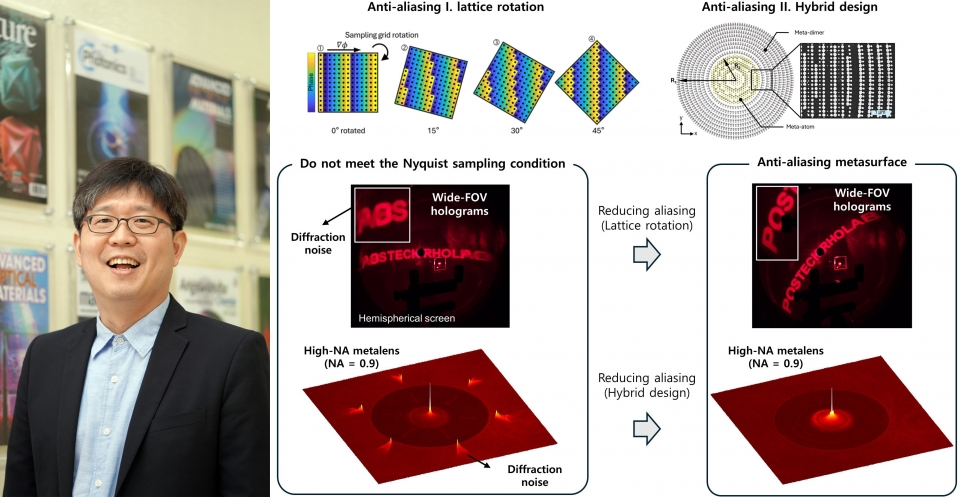
A research team led by Professor Junsuk Rho (ME, CE, EE), along with ME Ph.D. candidates Seokwoo Kim, Joohoon Kim, Kyungtae Kim, and Minsu Jeong has proposed a groundbreaking approach to overcome the limitations of planar optics. Their study redefines the metasurface sampling theory to improve optical performance. This research was published in Nature Communications.
Planar optics enable ultra-thin optical devices. Bulky lenses hinder miniaturization in cameras and AR/VR devices. In contrast, metasurfaces, which consist of nanoscale structures that sample the phase distribution of light, can perform diverse optical functions, from lensing to holography, with significantly reduced thickness.
Conventional metasurface designs have relied on the Nyquist Sampling Theorem to prevent aliasing, a distortion that occurs when the sampling frequency is insufficient. A well-known example is the “wagon-wheel effect” where a wheel in a movie or video appears to rotate slowly or even remain stationary, despite actually spinning forward. However, the research team discovered that the Nyquist theorem does not fully capture the complexities of optical wave interactions in metasurfaces, leading to inaccuracies in predicting and mitigating distortions.
To address this issue, the researchers developed a novel multidimensional sampling theory tailored to the unique properties of metasurfaces. They found that the geometric relationship between the metasurface’s lattice structure and its spectral distribution critically influences optical performance. By incorporating rotational lattice configurations and diffraction elements, the team introduced an anti-aliasing technique that minimizes optical noise and enhances light control.
Using this approach, the researchers successfully reduced noise across a broad wavelength range, from visible to ultraviolet (UV) light. They demonstrated high-NA metalenses and UV holograms, previously difficult to fabricate. Their findings provide a new framework for designing high-resolution metasurfaces while easing manufacturing constraints.
Prof. Rho stated, “Our work not only enhances high-NA metalenses and wide-angle holograms but also establishes a universal design principle applicable across electromagnetic spectra, from microwaves to extreme ultraviolet (EUV). Relaxing UV fabrication constraints is a breakthrough.”
This research was supported by POSCO, Samsung Electronics, and the National Research Foundation of Korea under the Ministry of Science and ICT.


